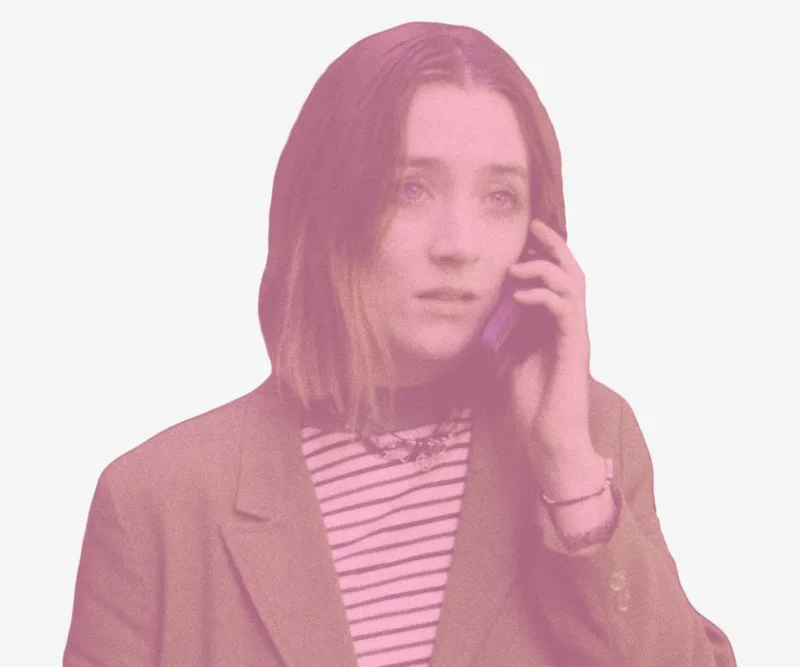By Durga Chew-Bose
The way Wim Wenders tells it, it was his co-producer on the set of Paris, Texas who insisted she’d found her. The perfect assistant. A young woman who would, according to Wenders, guide him “safely through this journey into unknown territory.”
Thirty-six years later, and calling to mind Wenders’ West Texas desert—how it cites the pure vacancy of a lunar landscape—we enter real space. But not the sort of space one hurtles through, dutifully. And not the sort of space flecked with stars and dust, sanctifying some great, beautiful beyond. No. This space, as conceived by director Claire Denis—that young woman who once guided Wenders safely into unknown territory—is decelerated and grisly, spiraling yet carnal. It’s the filmmaker’s English-language debut, a difficult albeit awing movie cleverly titled High Life. In it, Denis administers somatic doom at nearly every turn, telling the story of Monte (Robert Pattinson), the sole survivor—along with his infant daughter, Willow—of a twisted, failed mission where the government has sent death row inmates into space to collect energy from a black hole.

Monte and Willow’s life is incremental. Hermetic and isolated. One tiny step at a time, one lullaby, one sleep. Like the three notes of a familiar tune, reprising over and over, Monte and Willow’s life is eerie-anticipant. Somehow amateurish. They are the only ones.
What is it about fathers and daughters that feels predisposed to imagery of what’s left? Or of what’s been left behind. Of winging it while on the road. What is it about a father and daughter that so easily resembles two souls on the lam? Seeking and lost in a lovely way, but not free.
Paper Moon (1973) is a movie played by a real-life father and daughter. Ryan O’Neil and Tatum O’Neil are Moze and Addie, con artists during the Great Depression. Polly Platt’s unequaled production design and her material vision of Midwestern flatlands, windswept and wide open, give rise to an environment—much like space’s inhospitable wonder—that evokes the end of something or the very start. The film’s poster features father and daughter, sitting on a crescent moon, cold sober among the stars. Theirs is a high life, too.
The poster for High Life. Two hands, holding on. The tagline reads “Oblivion awaits.” Like some fugue-state invitation playing into that funny feeling which exists so long as the outcome isn’t fully known: anticipation. That the father-daughter pair are in space is clarified only through the father: his fingers are gloved in his space suit. Hers are pudgy. A baby’s wrist marked by how it doesn’t totally taper. A baby’s grip marked by its remarkable strength. We cannot help but remark on the baby’s grip. So strong, we’ll say.
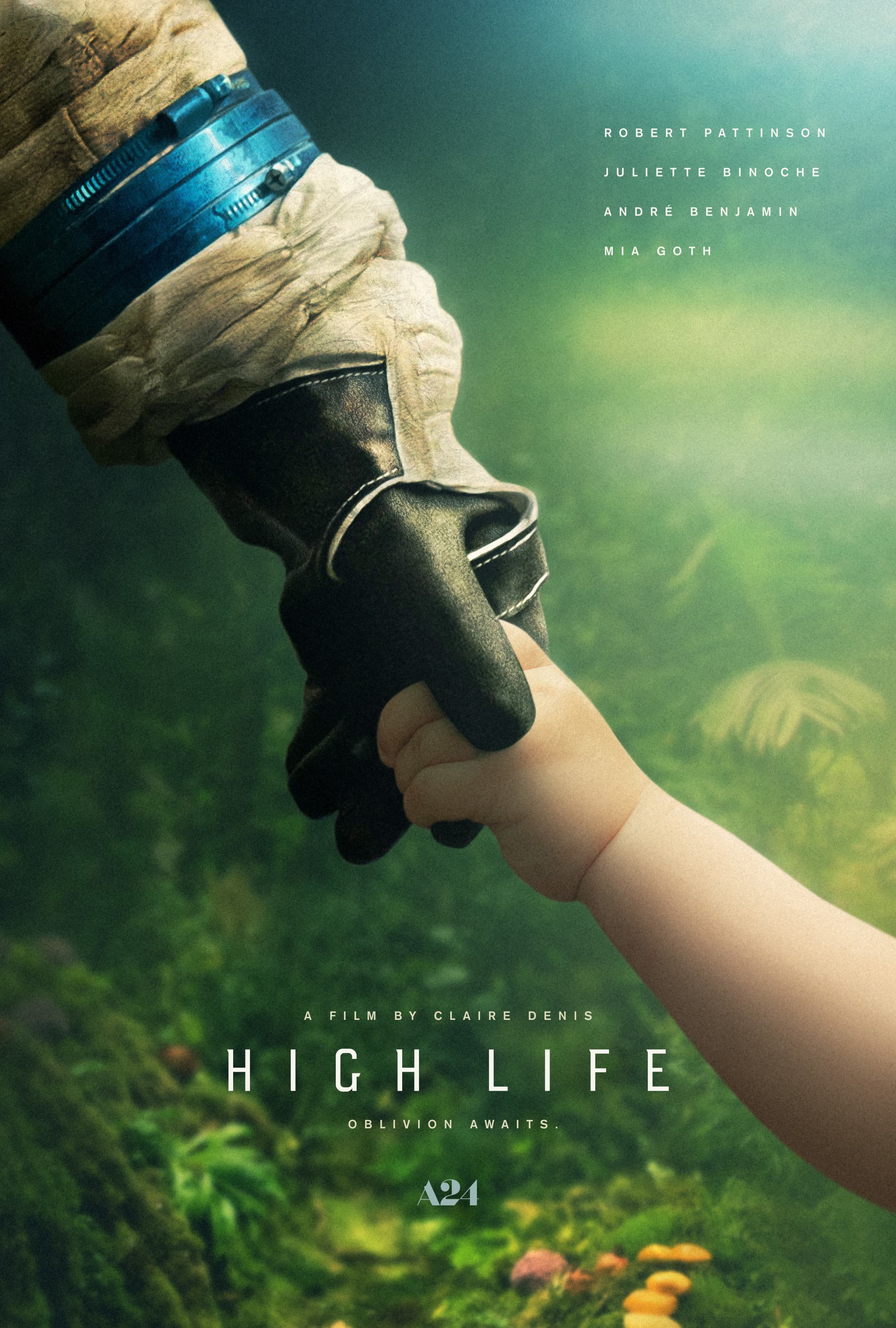
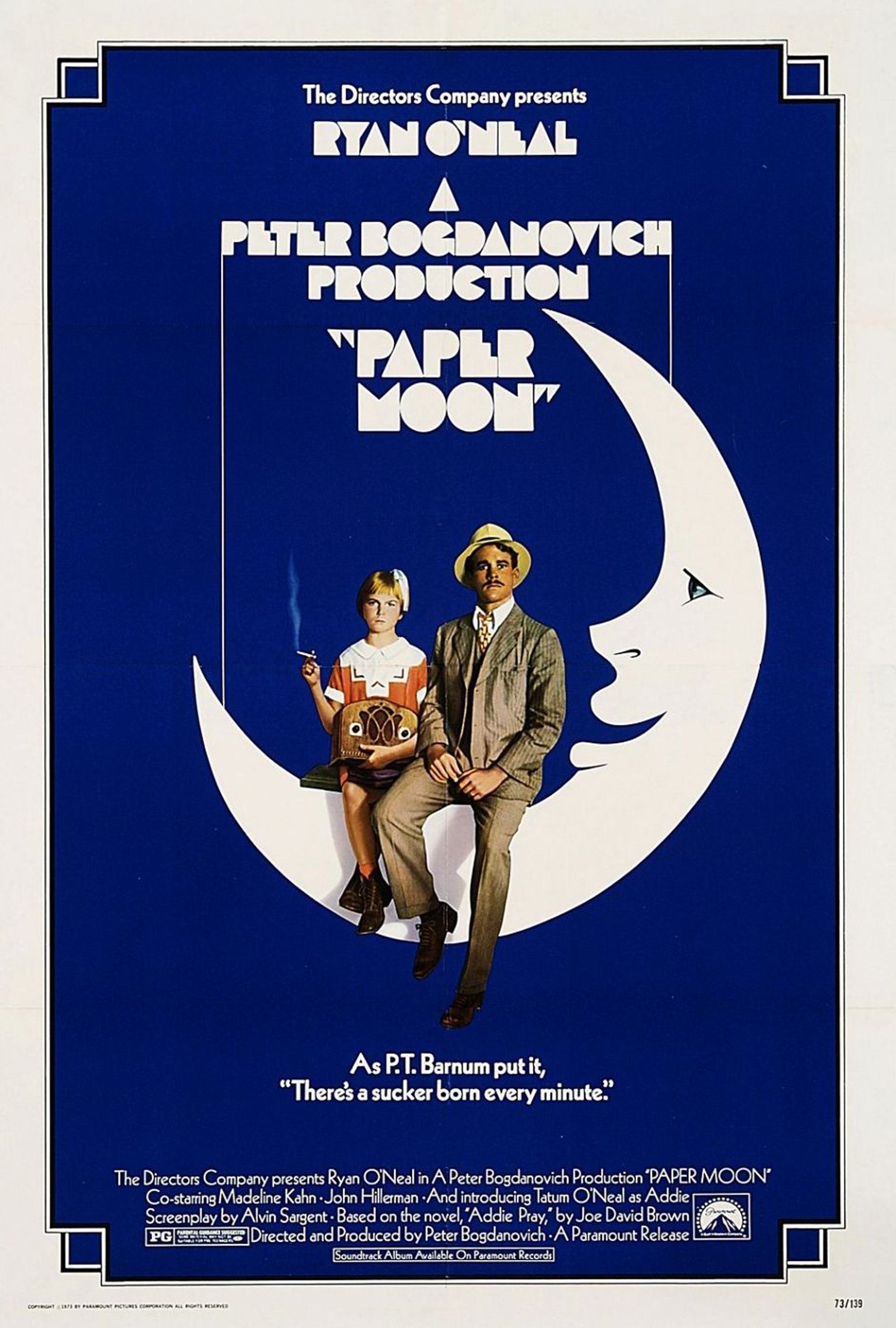
While Moze and Addie are sitting on a crescent moon, as if the moon were a swing bench, Monte and baby Willow are holding hands among lush, medicinal-green growth. Little yellow mushrooms sprout. This zone is damp, misty, cared for. The sort of green not associated with space but with sativa. Green is High Life’s incongruous strange. It’s the film’s attempt at Arcadia, so long as Arcadia—in true Denis form—is portioned and untenable. Denis’ vision for High Life is both void and overgrown. This paradoxical, amazingly plotless torpor represents only a small portion of why High Life defies category. Of why High Life is near impossible to metabolize. Of why High Life’s use of green is matched only by its use of red and magenta (green’s opposites on the color wheel). The inmates’ uniforms are dyed a maroon-red. (André Benjamin plays Tcherny, an inmate who wears his uniform while nursing the garden.) The ship’s interiors radiate an oxidized red. (Juliette Binoche plays Dr. Dibs, a wanton doctor wearing a Renata Adler braid, who navigates those interiors, deliberately, lasciviously.) Red, in this case, represents what’s cosmic but also what’s bodily. Glowing, pulsing, planetary light. Blood, fluids, insides, throb.
The red and magenta, and the green, recall Paris, Texas. Harry Dean Stanton as Travis Henderson, lost in the film’s opening, wearing his red baseball cap—a panorama of green mountains behind him. Nastassja Kinski’s Jane Henderson. Her bright pink sweater. That room with red accents like a phone, the lamp, the curtains. She’s separated by a pane of glass like Monte in space, in his red room, also separated by a pane of glass: his helmet, the shuttle.
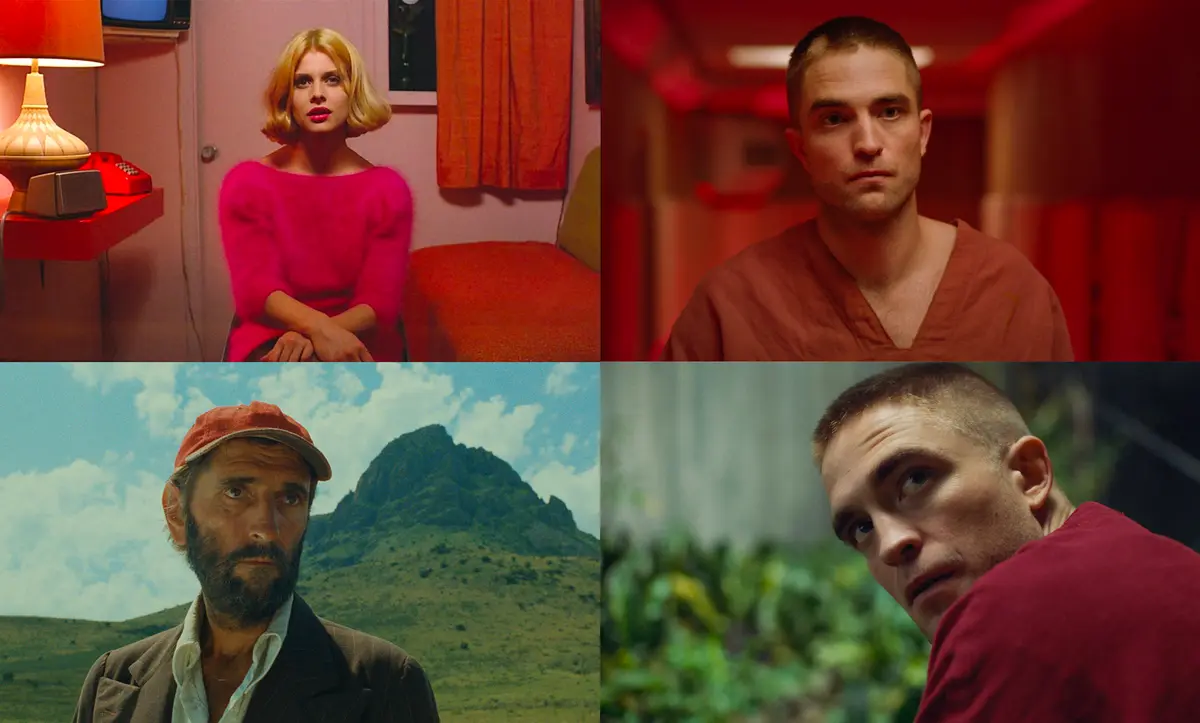
Why does High Life feel like a Western? Its irreverence? Or maybe it’s all this talk of Wenders. Sam Shepard, who co-wrote Paris, Texas (finishing it over the phone), feels close to a Monte. That cowboy sensibility that neighbors monastic, that feels like poetry. Like Monte himself, who practices quiet, measured restraint. Who keeps to himself. Whose proximity to violence is indistinct.
In Denis’ Nénette and Boni (1997), Gregoire Colin, who plays Boni, also has shorn hair and sharp features. He is a brother caring for his estranged sister, Nénette, who re-enters his life seven months pregnant. As Roger Ebert wrote in his review, “They form, if you will, a couple. Not one based on incestuous feelings, but on mutual need and weakness: Boni provides what emotional hope Nénette lacks, and her pregnancy adds a focus and purpose to his own life.” Denis gives the family a feeling of fringe. Denis portrays family as an impression; as the people we can count on to interrupt our lives.
What is it about fathers and daughters, in film, that seems suited for the sky? That certain stupor that being up there delivers. There’s Armageddon, for one. Fly Away Home and Interstellar, too. Maren Ade’s Toni Erdmann was certainly, perfectly, out there. Monte is an outlaw. Moze is a conman. In one of High Life’s earliest lines, Monte is tending to Willow. He says, “Don’t drink your own piss, Willow. Don’t eat your own shit. Even if it’s recycled. Even if it doesn’t look like piss or shit anymore. It’s called a taboo. TAH-BOO. TAAAAA-boo.” The first word he teaches his daughter explains who he is, in part, or how Monte is categorized: someone, something, banned. And yet, the way Pattinson says TAAAAA-boo, seems to hint at what High Life raises and dismisses. The closeness between father and daughter. This isn’t a story of what gets passed down.
While Wim Wenders was preparing production for Alice in the Cities (1974), the first film in his road trilogy, a friend took him to see Paper Moon. Wenders—shaken by the film’s similarities to Alice (the black and white; the road; the searching men Philip and Moze; the girls, nine-years-old yet persuasive, tough equals)—nearly cancelled his film. Eventually, and thanks to the advice of Samuel Fuller, Wenders rewrote the script to differentiate it. His poetic, plainspoken script which brings to mind Platt’s dusty, terrestrial design for Paper Moon, is perfectly articulated by a line in Alice. Describing the view from a plane, as captured in a Polaroid—the plane’s wing, its shadow, the sky’s vast cozy of clouds—Alice says, “That’s a lovely picture. It’s so empty.”
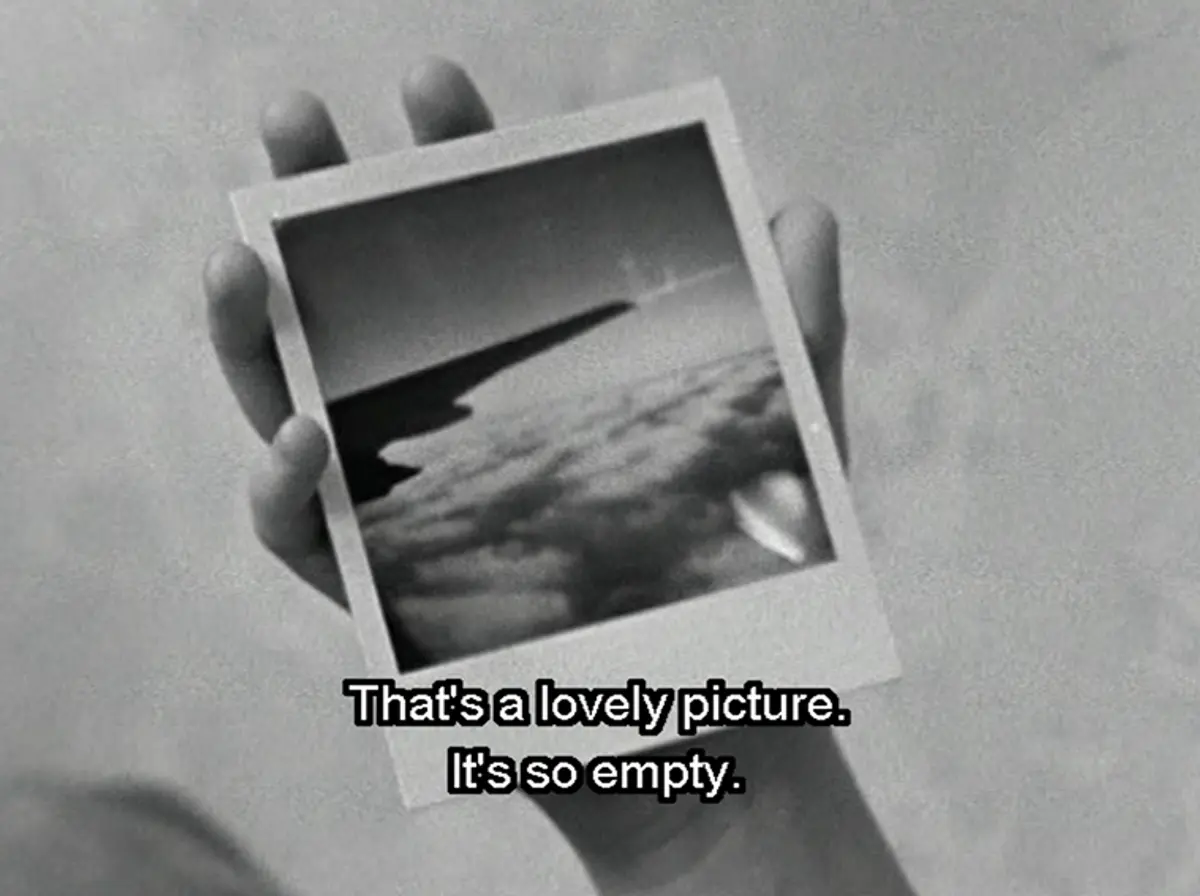
In an essay by the writer Siri Hustvedt, titled “My Father Myself,” Hustvedt describes how as she got older, there was a shift in her relationship with her father. “He seemed unavailable to a degree that startled me,” she writes. “It could be difficult for him to say, so sometimes he would do.” Hustvedt recounts a tearful, painful visit to the orthodontist where she was fitted for braces. On the way home, her father stopped at a gas station, left the car, and returned with a box of chocolate-covered cherries — her father’s favorite. “I was eleven years old and, even then, I felt poignancy mingle with comedy.” She didn’t like chocolate-covered cherries and couldn’t possibly eat them having just been fitted for braces. “The mute gesture has stayed with me as one of infinite, if somewhat wrong-headed kindness, and as a token of his love.”
Monte calls Willow his “little package.” She was delivered to him; he carries her though he didn’t carry her. Monte is a reluctant father who studies his daughter’s approach to life, like some kind of loving, curious reconnaissance. The soothing doesn’t come naturally. There is no intense identification. He handles her undecidedly. Theirs is a solitude that feels both invented, but also, a means for recovery. Wordless gestures that seem to say, we’re in it together. The film’s last line—“Shall we?”—submits to this notion, as if answering High Life’s tagline. “Shall we?” is less of a question and more of a pact.
My father recently spent a month in the hospital, in isolation. One evening, I went to see him after work. I stayed with him for four, five hours, not saying anything while he slept. He was in agony—of which he tried to show little. But there it was—the pain—in how he slept, curled up and head covered by his blanket. He’d become thin. He wasn’t eating. There were tubes and beeping sounds, masks, and hospital gowns. I sat on a daybed near the window, my palms growing sweaty in latex gloves. It was dark and we felt deserted. Like the entire world outside my father’s hospital room no longer existed. Or if it did, once, it was now abandoned. That particular hush, like an aftermath, like the phone lines had been cut. That hush, like the science of a hospital room—engineered to monitor life, yet devoid of it, somehow. There was nothing to do but be the company and comfort my father’s subconscious needed. My mind wandered to a singsong Bengali refrain my father used to say to me before bed, when I was a kid. It went:
Akashey aakta chand, arekta chand koi?
(There is a moon in the sky, where is the other moon?)
And I would shout: Eiijey!
(Here I am!)
Sitting in the hospital, on the daybed just five or so feet from my father, I kept wanting to whisper, Eiijey! Eiijey, Baba!
In that dark room, we felt like two moons alone in the sky.
Durga Chew-Bose is a writer and editor based in Montreal.



